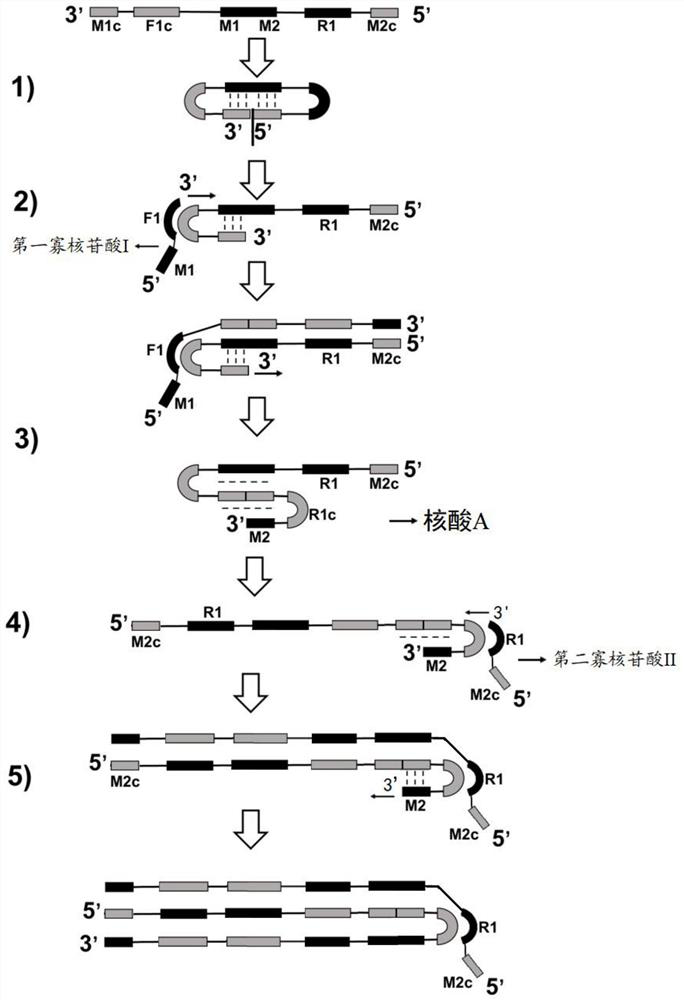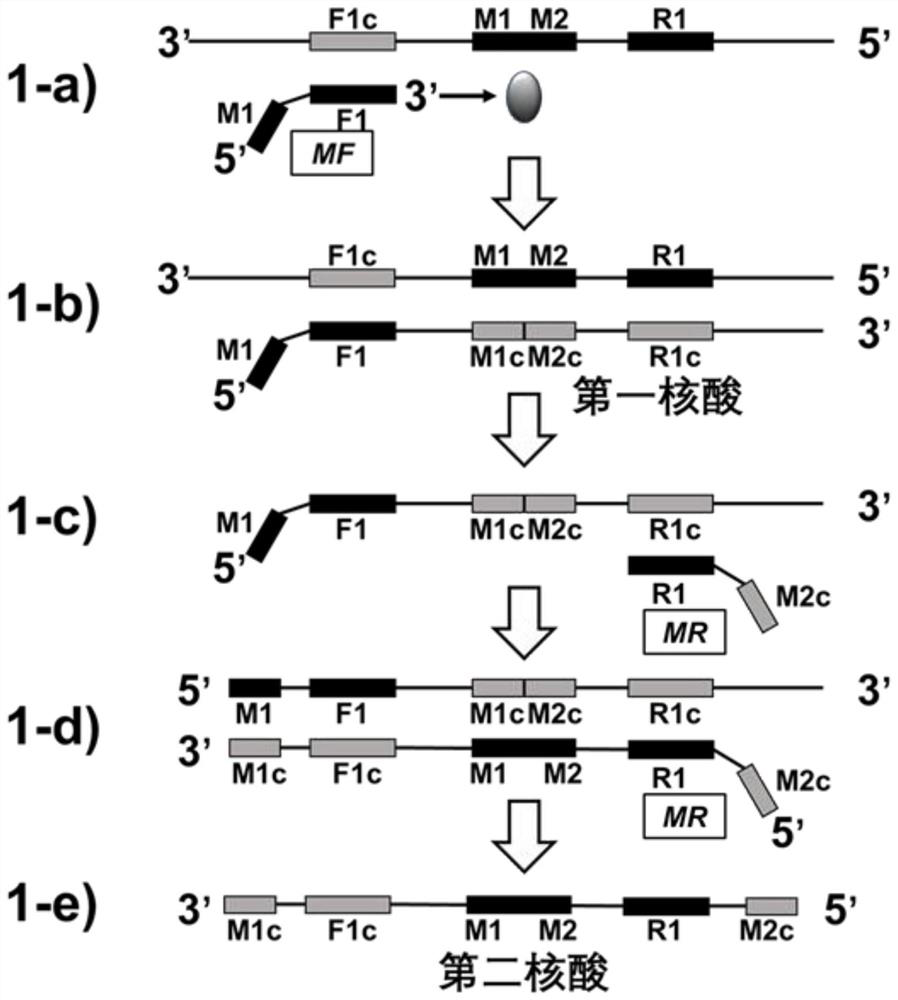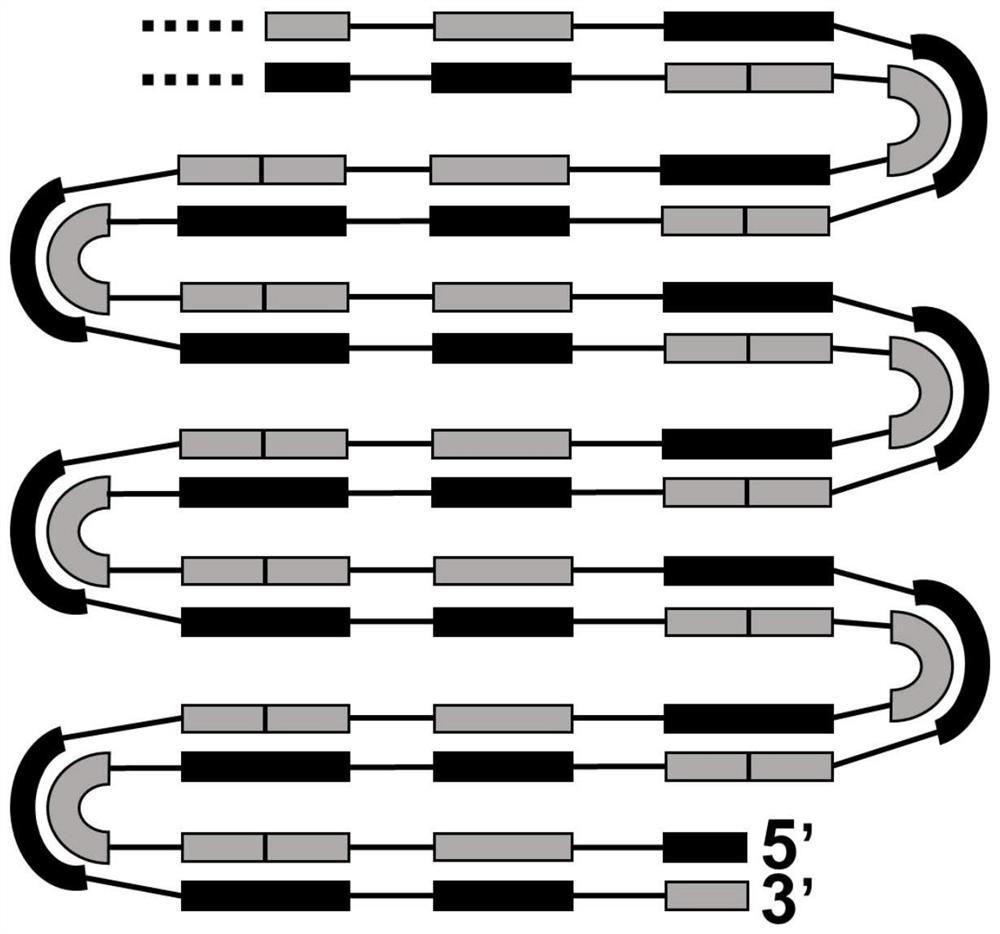Method for synthesizing nucleic acid under constant temperature condition, kit and application
A synthesis method and kit technology, applied in the field of genetic engineering, can solve the problems of samples and reaction solutions being susceptible to external contamination, cumbersome processes, etc.
- Summary
- Abstract
- Description
- Claims
- Application Information
AI Technical Summary
Problems solved by technology
Method used
Image
Examples
Embodiment 1
[0116] Example 1 For the amplification of fragments in influenza A virus H1N1
[0117] Influenza A (H1N1) virus belongs to Orthomyxoviridae family (Orthomyxoviridae) and Influenzavirus A (Influenzavirus A). Symptoms of Influenza A (H1N1) are similar to common cold. H1N1 was widespread in 2009, which caused a certain degree of panic. Because of the nucleic acid detection of H1N1, the cDNA is generally detected by PCR technology after reverse transcription. Therefore, the new primers designed by the method of the present invention can also be applied to the detection of H1N1 virus. The nucleic acid of the present invention is tried using artificially designed H1N1 (from GenBank: GQ290690.1) inserted with restriction sites as a template. The two primers used in the experiment are N1-MF (the nucleotide sequence is shown in SEQ ID NO.1) and N1-MR (the nucleotide sequence is shown in SEQ ID NO.2). These are designed to anneal into ringed regions by exploiting the proximity packin...
Embodiment 2
[0134] Embodiment 2 confirms the reaction product among the embodiment 1 by the digestion of restriction enzyme
[0135] In order to verify that the nucleic acid obtained in Example 1 of the present invention has a structural form in which complementary nucleotide sequences are linked in a single strand in a circular structure, the product was digested with restriction enzymes. If theoretical fragments can be generated by digestion, and there are no unclear band patterns and unelectrophoresed bands at high molecular weights, it can be inferred that the synthetic product of Example 1 has complementary sequences alternately linked in single strands nucleic acid within.
[0136] The reaction solution after the termination of the reaction in Example 1 is deposited and purified by precipitation with ethanol, and the resulting precipitate is recovered and re-dissolved in ultrapure water, and the restriction enzymes XbaI and XhoI are used separately and then used in combination with ...
Embodiment 3
[0137] Example 3 Application of EvaGreen to Verify H1N1 Gene Amplification Reaction Products
[0138] Similar to SYBR Green I, EvaGreen is a dye with a green excitation wavelength that binds to the minor groove region of all dsDNA double helices, and its inhibition on nucleic acid amplification reactions such as PCR is much smaller than that of the latter. In the free state, EvaGreen emits weak fluorescence, but once bound to double-stranded DNA, the fluorescence is greatly enhanced. Therefore, the fluorescence signal intensity of EvaGreen is related to the quantity of double-stranded DNA, and the quantity of double-stranded DNA existing in the nucleic acid amplification system can be detected according to the fluorescent signal.
[0139] By primer N1-MF (nucleotide sequence as shown in SEQ ID NO.1) and N1-MR (nucleotide sequence as shown in SEQ ID NO.2), the combination of the reaction solution of the method for synthesizing nucleic acid of the present invention is as follows...
PUM
 Login to View More
Login to View More Abstract
Description
Claims
Application Information
 Login to View More
Login to View More - R&D
- Intellectual Property
- Life Sciences
- Materials
- Tech Scout
- Unparalleled Data Quality
- Higher Quality Content
- 60% Fewer Hallucinations
Browse by: Latest US Patents, China's latest patents, Technical Efficacy Thesaurus, Application Domain, Technology Topic, Popular Technical Reports.
© 2025 PatSnap. All rights reserved.Legal|Privacy policy|Modern Slavery Act Transparency Statement|Sitemap|About US| Contact US: help@patsnap.com



